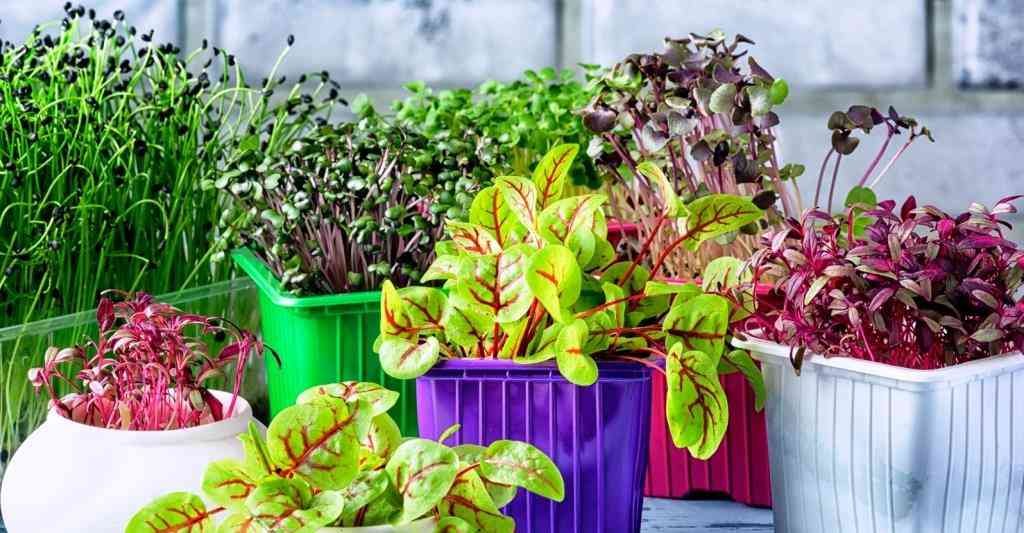During the COVID-19 pandemic, there have been a lot of people who have learned new things, and one of the hobbies that many individuals have been inclined to is gardening. Numbers from studies reveal that gardening is a hobby for 55% of American families today. Suppose you are keen on producing your food at home, but unfortunately, you do not have a garden or you cannot afford time to take care of it; then microgreens are the most practical option. Microgreens are young vegetables, herbs, grains, and flowers. After the seedlings emerge, they are ready to be harvested in two weeks and, hence, give speedy and easy greens.
The person who tells the truth of microgreens, “Sarah Ardanuy Johnson, PhD, RDN, an assistant professor and the director of the Functional Foods and Human Health Laboratory at Colorado State University”, says on the topics of microgreen garnishes and there are not many restaurants that would leave the vibrant microgreens just as they are, without any touch of extra decoration. They are also easy to handle as they are smaller than baby greens and sprouts; hence, they need little space and can be cultivated easily. A windowsill is the place for their easy and simple growth, and you can have them in your house for a meal such as salads, soups, and other dishes
Microgreens offer an array of health benefits:
Research suggests that they are more concentrated in vitamins, minerals, and phytochemicals compared to their mature counterparts. According to Johnson, microgreens generally contain about five times more vitamins and phytochemicals than full-grown plants. This nutritional density makes microgreens an excellent addition to the recommended 8-10 servings of fruits and vegetables per day.
In addition to their nutritional value, microgreens have a reduced environmental footprint. They can be grown year-round, indoors, and with minimal water, making them highly sustainable. Whether you obtain them from a local farmer, a nearby grocery store, or grow them in your own home, microgreens are an eco-friendly choice.
To start your own microgreens garden:
You’ll need a few supplies. Growing trays, a growing medium such as potting soil or coconut coir, microgreens seeds, a spray bottle, and natural light or LED grow lights are essential. If you’re new to gardening or lack experience, consider purchasing a grow kit from companies like True Leaf Market or Hamama. These kits provide everything you need to get started.
Follow this simple step-by-step guide to grow your microgreens:
Find a sunny space: Choose a location that receives plenty of sunlight during the day, such as a south-facing windowsill or your porch/balcony.
Prepare your plot: Cover your growing tray with 1-2 inches of soil and gently pat it down.
Scatter your seeds: Sprinkle the microgreens seeds evenly over the soil and cover them with a thin layer of soil. Lightly mist them with water using a spray bottle.
Tend to your garden: Mist your plot once or twice a day for the next two weeks.
Harvest your microgreens: When the microgreens reach about two inches in height and develop their first set of leaves, they’re ready to eat. Snip them just above the soil using kitchen scissors, rinse them off, and enjoy their fresh flavors.
Microgreens come in various varieties:
Each with its distinct flavor. Consider trying these flavorful microgreens in your garden:
Red Cabbage: Vibrant and with a little kick, red cabbage microgreens make an excellent addition to sandwiches or dishes that need some heat.
Arugula: With its heat, bitterness, and intensity, arugula microgreens add a punch of flavor. Sprinkle them on “bland” dishes or top your avocado toast with them.
Broccoli: Offering a milder taste compared to red cabbage and arugula, broccoli microgreens are ideal for grain bowl toppings and can stand alone as a side dish.
Red Beet: If you enjoy the taste of beets, you’ll love red beet microgreens. Mix them into salads or dishes that would benefit from a beet-like flavor, or blend them into a smoothie for a nutritious boost.
Growing microgreens is an accessible and rewarding way to enhance your meals with fresh, nutrient-packed greens. By incorporating microgreens into your daily diet, you can enjoy their health benefits, contribute to sustainability, and explore a variety of flavors. Start your microgreens garden today and embark on a flavorful and nutritious culinary adventure.




